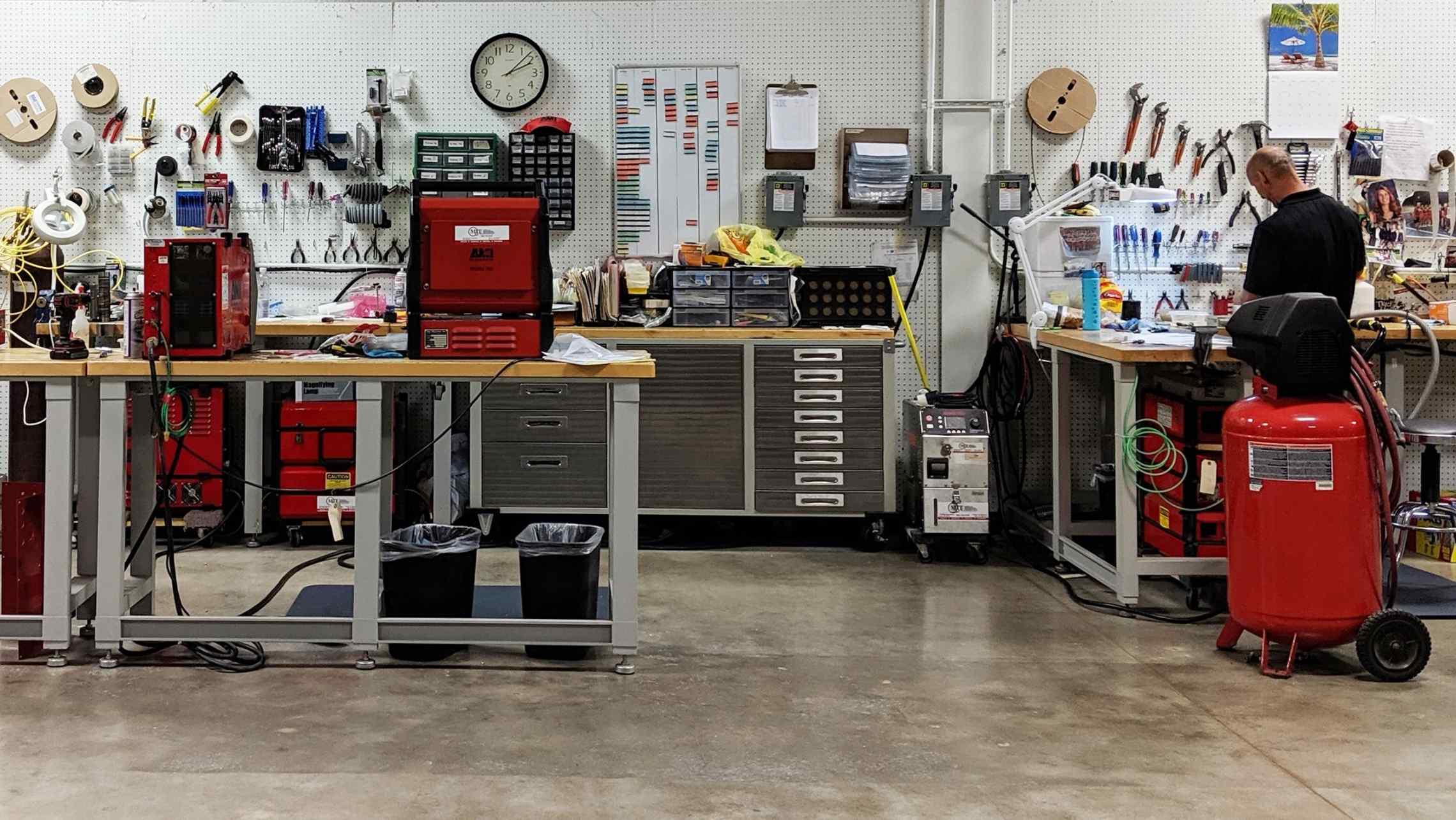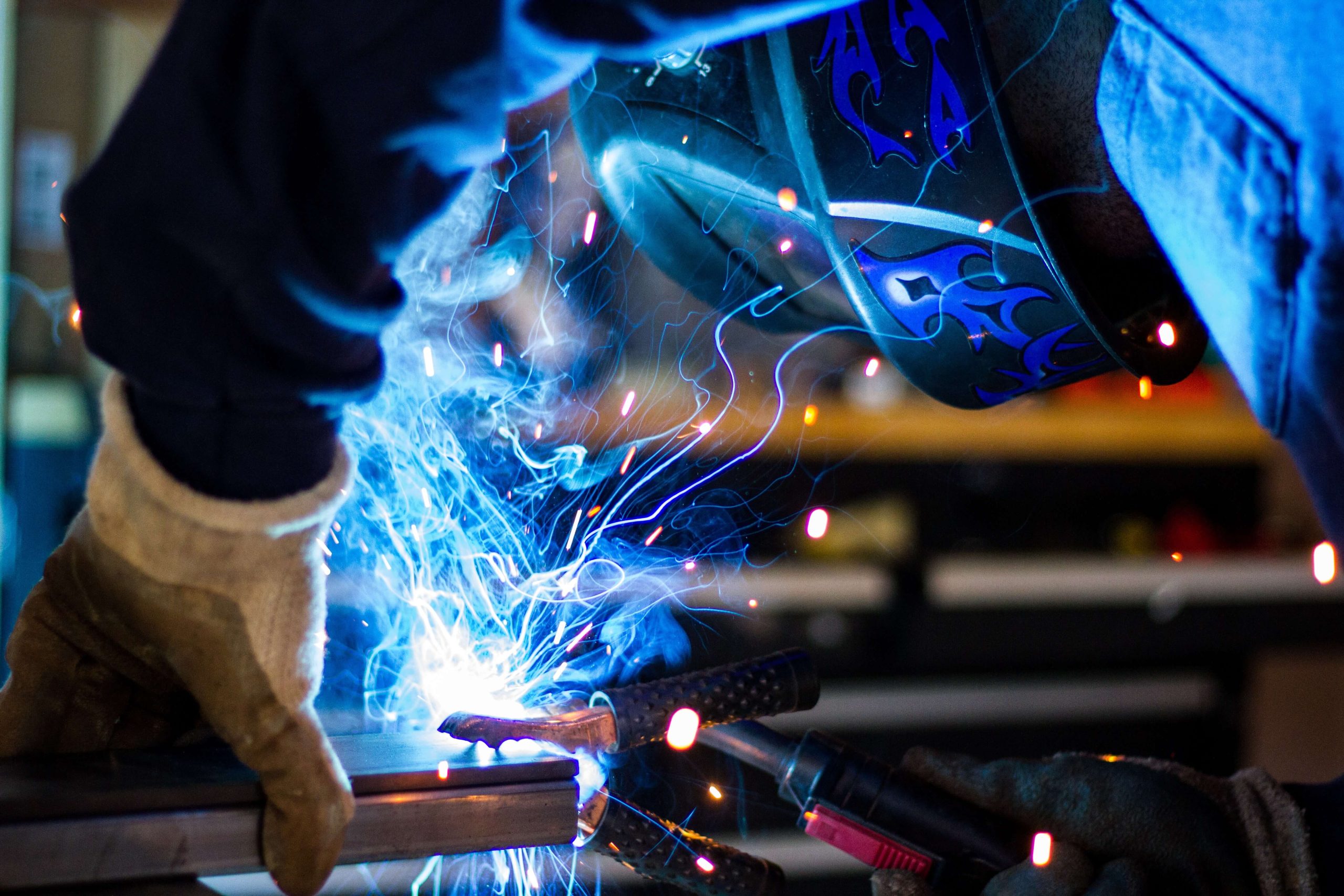What causes misalignment forms and how Belgrade Fabrication handles it
Wiki Article
Usual Welding Repair Service Issues and How to Address Them Efficiently
Welding fixings frequently experience a variety of issues that can endanger the honesty of the final product. Typical problems consist of poor infiltration, porosity, and misalignment, to name a few. Each flaw presents distinct difficulties that call for particular methods for resolution. Comprehending these concerns is essential for welders intending to enhance their abilities and end results. This discussion will certainly explore these typical welding repair service problems and reliable approaches to resolve them.Inadequate Infiltration
Insufficient infiltration takes place when the weld metal stops working to totally fuse with the base material, causing weak joints and possible architectural failures. This concern typically comes from not enough heat input, incorrect electrode angle, or improper welding rate. Welders might encounter inadequate penetration due to a mistake of the essential parameters for a particular material density or type. Furthermore, contamination on the base product's surface area can hinder reliable bonding, worsening the issue. To deal with poor infiltration, welders need to guarantee proper settings on their devices and maintain a tidy job surface area. Routine assessment of welds is advised to determine any type of deficiencies early, permitting prompt improvements and the prevention of compromised structural stability in welded settings up.Porosity
Porosity is a typical defect in bonded joints that materializes as tiny gas bubbles trapped within the weld metal. This issue can endanger the honesty of the weld, bring about reduced toughness and prospective failure under tension. Montana Mobile Welding and Repair Belgrade Fabrication. Porosity normally arises from contamination, moisture, or improper welding strategies, which permit gases to leave right into the molten weld pool. To address porosity, welders should assure appropriate surface area preparation, keep a tidy functioning atmosphere, and make use of ideal welding specifications. Additionally, choosing the ideal filler product and shielding gas can reduce gas entrapment. Routine examination and screening of welds can help identify porosity early, ensuring prompt restorative actions are taken, therefore preserving the quality and reliability of the bonded frameworkMisalignment
Imbalance in welding can emerge from different elements, consisting of improper configuration and thermal development. Recognizing the source is crucial for effective resolution. Numerous adjustment methods are offered to straighten elements and ensure architectural integrity.Root causes of Misalignment
Welding misalignment frequently comes from a range of underlying problems that can jeopardize architectural honesty. One key cause is incorrect fit-up of elements prior to welding, which can bring about gaps and unequal surfaces. Variants in thermal expansion throughout the welding process can also cause distortion, specifically if the products being joined have different coefficients of expansion. Furthermore, inadequate securing and fixturing may fail to hold components safely in place, causing motion during welding. Improperly conserved tools, including welding devices and tools, may introduce incongruities in the weld bead, further adding to misalignment. Operator error, stemming from insufficient training or experience, can likewise play a significant function in producing misaligned welds.
Improvement Methods Available
Dealing with imbalance properly calls for a mix of corrective techniques tailored to the certain concerns at hand. One typical method is making use of components or jigs to hold components in the right setting during welding, making sure regular placement. Additionally, preheating the products can help in reducing distortion and improve fit-up. For significant misalignment, mechanical realignment methods, such as using hydraulic jacks or clamps, can be used to fix the setting prior to welding. Post-weld heat therapy may likewise be required to soothe stresses triggered by misalignment. Lastly, cautious assessment and modification during the arrangement phase can protect against imbalance issues from becoming considerable troubles, promoting a smoother welding procedure and enhancing general architectural stability.Distortion
Distortion is a typical difficulty in welding that can occur from various variables, consisting of irregular heating and air conditioning. Recognizing the sources of distortion is necessary for implementing efficient prevention methods. Resolving this concern not only improves architectural stability yet likewise enhances the total top quality of the weld.Reasons for Distortion
When subjected to the intense heat of welding, products typically go through modifications that can result in distortion. This sensation largely occurs from thermal expansion and contraction throughout the welding process. As the weld location heats up, the product broadens; upon air conditioning, it contracts, which can develop interior stress and anxieties. Furthermore, uneven home heating across a work surface can aggravate these tensions, leading to warping or bending. The sort of material likewise plays a considerable duty; metals with differing thermal conductivity and coefficients of development may respond in a different way, causing unforeseeable distortions. In addition, poor joint layout and inadequate fixturing can add to misalignment throughout welding, boosting the probability of distortion. Recognizing these reasons is vital for effective welding repair work and avoidance methods.Prevention Techniques
Reliable prevention strategies for distortion throughout welding emphasis on managing warm input and ensuring appropriate joint layout. Keeping a regular warm input aids to reduce thermal expansion and contraction, which can bring about distortion. Using strategies such as pre-heating the workpiece can likewise lower the temperature level gradient, advertising uniform home heating. In addition, picking appropriate joint designs, such as T-joints or lap joints, can improve security and reduce tension focus. Executing appropriate fixturing to protect the work surfaces in place even more aids in preserving alignment throughout the welding procedure. Ultimately, staggered welding series can distribute warmth much more equally, avoiding local distortion. By applying these strategies, welders can considerably lower the likelihood of distortion and boost the overall high quality of their welds.Fracturing
Breaking is a common concern come across in welding repairs, frequently resulting from numerous variables such as inappropriate air conditioning prices, material choice, or inadequate joint prep work. The incident of fractures can significantly compromise the stability of the weld, leading to prospective failures during procedure. To address this concern, welders should first assess the origin, guaranteeing that materials work and properly chosen for the particular application. Additionally, regulating the cooling price during the welding procedure is essential; fast cooling can induce stress and anxiety and bring about cracking. Proper joint design and prep work additionally contribute to reducing the radnor welding danger. Applying these methods can boost weld top quality and resilience, eventually lowering the possibility of splitting in finished weldments.
Incomplete Combination
A substantial concern in welding repair work is incomplete combination, which happens when the weld steel does not appropriately bond with the base product or previous weld More hints passes - Montana Mobile Welding and Repair Welding. This issue can result in weaknesses in the joint, potentially endangering the stability of the welded framework. Aspects adding to insufficient fusion include insufficient warm input, inappropriate welding strategy, and contamination of the surface areas being joined. To resolve this problem successfully, welders need to guarantee correct pre-weld cleaning and surface prep work, along with change their welding criteria to accomplish adequate infiltration and fusion. Routine assessment during the welding procedure can additionally help determine insufficient blend early, permitting prompt rehabilitative actions to improve the general high quality of the weldOverheating
While welding repair services can improve structural honesty, overheating presents a substantial challenge that can result in material destruction. Extreme warmth during welding can modify the mechanical residential properties of metals, leading to decreased strength, raised brittleness, and bending. This sensation is specifically important in high-stress applications where structural reliability is paramount. Determining overheating can entail visual assessments for discoloration or distortion, as well as checking temperature throughout the welding procedure. To mitigate the risks related to getting too hot, welders ought to employ suitable techniques, such as regulating warm input, changing travel speed, and making use of suitable filler materials. Additionally, carrying out pre- and post-weld warm treatments can aid restore product buildings and boost the overall high quality of the fixing, making sure long-lasting performance and safety.Often Asked Concerns
What Are the Common Signs of a Welding Problem?

Exactly How Can I Check My Welds for High quality?
To evaluate welds for quality, one can utilize visual assessments, ultrasonic screening, and radiographic approaches. Each strategy assures structural honesty, recognizes flaws, and validates adherence to specified criteria, eventually enhancing the dependability of the bonded joints.What Safety and security Safety Measures Should I Take While Welding?
When welding, one need to prioritize security by using proper personal protective devices, making certain appropriate air flow, safeguarding combustible materials away, preserving a tidy workspace, and being mindful of look at here environments to stop injuries and crashes.Can I Fix a Weld Without Remodeling the Entire Joint?
Fixing a weld without remodeling the entire joint is possible, relying on the damages (Fabrication). Strategies such as grinding, adding filler material, or making use of a welding procedure can efficiently deal with certain problems while maintaining the bordering structureWhat Tools Are Crucial for Reliable Welding Repairs?
Crucial devices for effective welding repair work consist of a welding equipment, cord brush, grinder, protective gear, clamps, and filler materials. Each tool plays an important function in guaranteeing high quality and safety throughout the fixing process. Porosity commonly emerges from contamination, moisture, or improper welding techniques, which permit gases to leave into the liquified weld pool. Improperly kept equipment, consisting of welding equipments and devices, might present inconsistencies in the weld bead, additional contributing to misalignment. When subjected to the extreme heat of welding, materials commonly undergo modifications that can lead to distortion. Splitting is an usual concern come across in welding repair work, often resulting from different aspects such as inappropriate cooling prices, product option, or insufficient joint prep work. A considerable problem in welding repairs is incomplete blend, which occurs when the weld steel does not adequately bond with the base product or previous weld passes.Report this wiki page